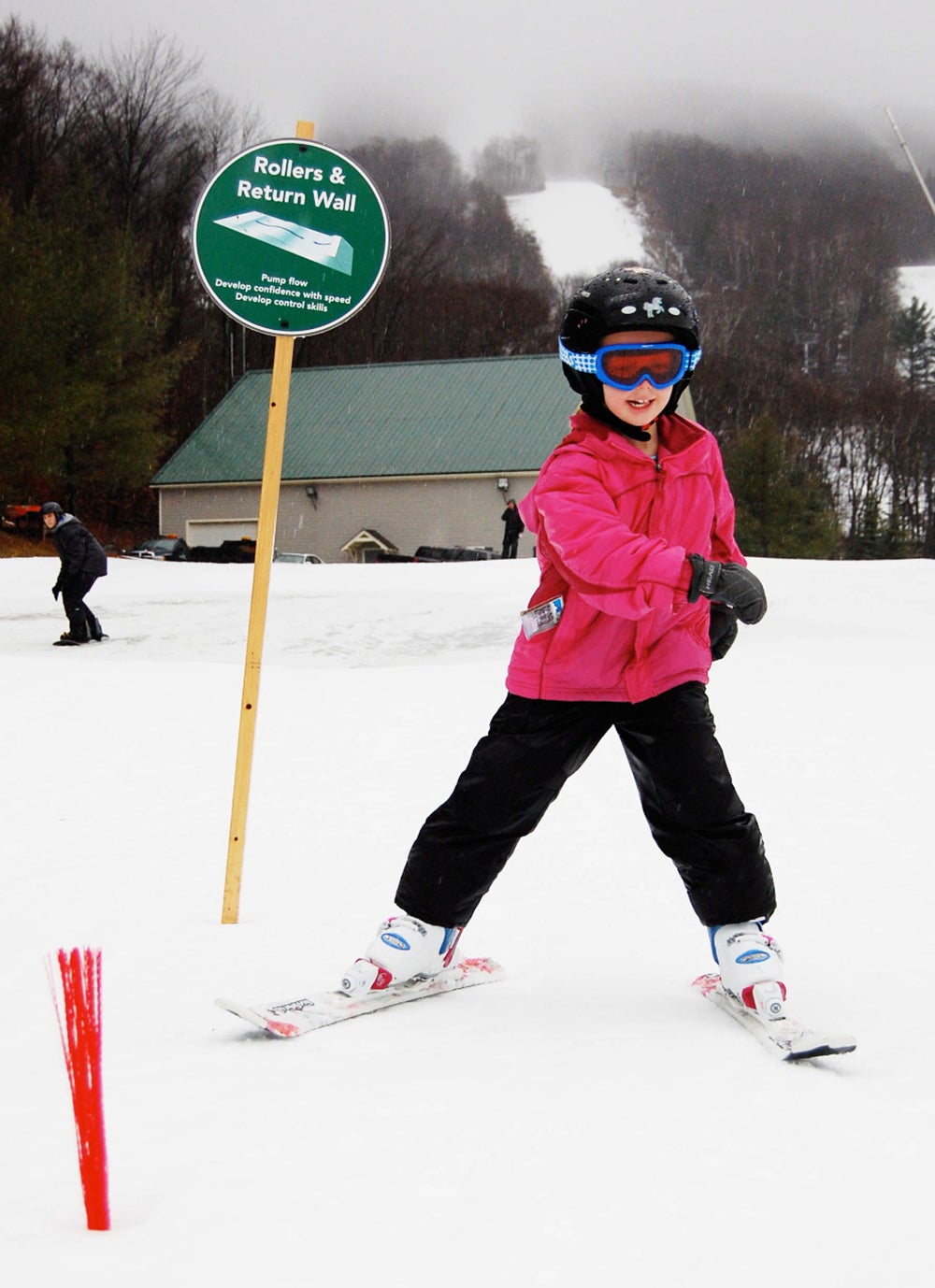A New Way to Learn How to Ski?

There never has been a truly easy way to learn how to ski—there just are too many moving parts, both gear and human. And that’s part of the sweet satisfaction of becoming an expert rider: It takes a bunch of time and hard work. But there’s an innovative new terrain-focused instruction method catching on at resorts nationwide that strives to shorten the skiing learning curve.
Terrain-based instruction uses sculpted dips, banks and rollers to give beginners a true skiing experience from the start, including speed control, weighting/unweighting and edging/carving.
In the terrain-based progression, never-evers still start on the flats, but then move quickly to a mini-pipe where they experience the sensation of sliding without really having to know how to stop as they go up and down the pipe walls. Then they progress to a series of gently banked turns and rollers where they rapidly develop lateral weight-shift skills that are key to turning.
“Instead of being about stop, it’s all about go,” says Joe Hession, CEO of Snow Operating, a snowsports consulting firm based out of Vail, Colo., and a pioneer of the new terrain-based instruction paradign. “It’s a new way to build the same two skills that have always been essential to skiing—turning and stopping with control and style.”
Ski instruction has a legacy as long as the sport itself. Hannes Schneider brought the first organized ski-instruction method from Austria to the U.S. when he fled the Nazis in the run-up to World War II. His Arlberg Technique was a formal, regimented format to learning turn shapes and skiing skills. In the Sixties, a man named Cliff Taylor had success teaching newcomers to ski with the Graduated Length Method, which started skiers on very short skis and moved them to increasingly longer ones, based on the then radical principal that short skis turn easier, so give beginners a head start. By the late 1990s, never-evers were learning through edible metaphors, practicing pizza-pie and French-fry turns.
I headed up to Jiminy Peak, in Hancock, Mass., to check out the new terrain program, which has been institued at Jiminy and sister resorts Bromley, Vt., and New Hamphire’s Cranmore. A wretched Saturday of torrential rain washed out ski school. But Sunday brought a sparse but enthusistic crowd of never-evers.
I shadowed Lauren Azuolay, 44, a pediatric physical therapist from Larchmont, N.Y., and her children Danielle, 14, Naomi, 8, and Gabriella, 6 as they worked their way through the program. None had ever been on skis before. At the end of 90 minutes, they all had acquired basic speed control skills. More importantly, they enthusiastically agreed they had fun and all wanted to try skiing again. And when I ran into Lauren two hours later in the base lodge, she was indeed booking a return trip to Jiminy for another family instruction session.
It’s not exactly a large sample size, but the success rate looked to be 100 per cent. As a life-long skier and advocate of the sport, I’ll take it.
Steve Cohen is a former SKI Magazine executive editor